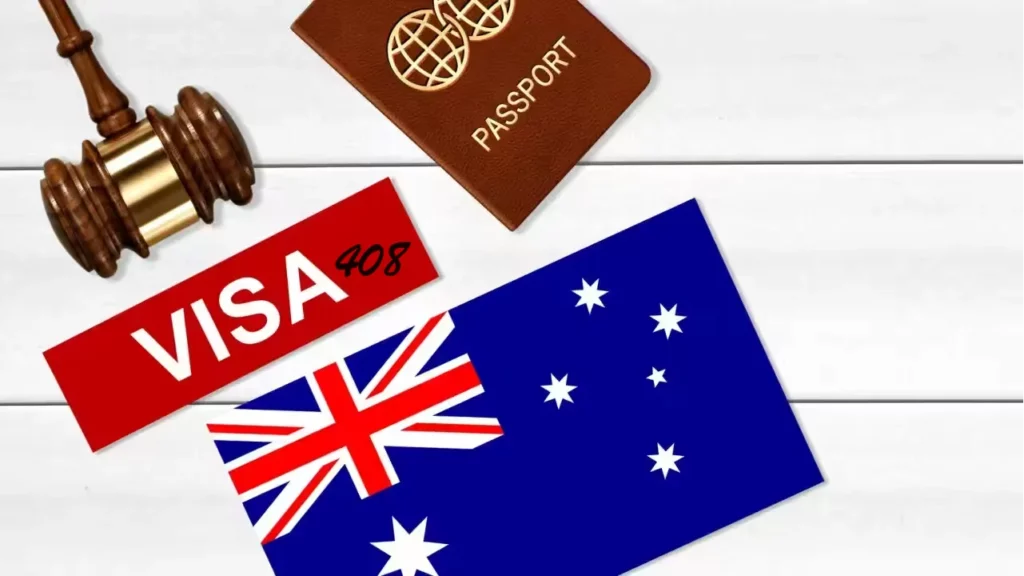Exploring Your Visa Options After the Australian 408 Visa

The Australian 408 Visa, often referred to as the Temporary Activity Visa, is a versatile visa that allows individuals to participate in a wide range of temporary activities in Australia. However, once your 408 Visa expires, you may find yourself wondering about the next steps. What are your options for staying in Australia legally? We will delve into the different visa options available to you after your 408 visa expires.
Understanding the Australian 408 Visa

Before we jump into the post-408 Visa options, it’s essential to have a solid understanding of the 408 Visa itself. In this chapter, we will explore the key aspects of the 408 Visa, including:
- Eligibility Criteria: Who can apply for a 408 visa, and what are the essential requirements?
- Types of Activities Covered: A detailed look at the diverse range of activities you can engage in with this visa, from cultural exchanges to entertainment productions
- Visa Duration: How long can you stay in Australia on a 408 Visa, and are there any extensions available?
- Work Rights and Limitations: An explanation of the work conditions that apply to 408 visa holders
- Visa Conditions and Obligations: What are the conditions and responsibilities you need to adhere to while on a 408 Visa?
Post-408 Visa Options
After your 408 Visa expires, you have several alternatives for remaining in Australia, depending on your specific circumstances and objectives. We will discuss the following visa options in detail:
Temporary Graduate from Visa (Subclass 485):
- Eligibility criteria
- Application process
- Visa duration
- Work and study rights
Skilled Migration Visas (Subclass 189 and 190):
- Overview of skilled migration
- Eligibility criteria
- Points-based system
- State and territory nomination
Partner Visas (Subclasses 820 and 801):
- Partner eligibility criteria
- Application process
- Visa conditions
- Permanent residency pathway
Student Visas (Subclass 500):
- Studying in Australia
- Eligibility criteria
- Application process
- Work rights and limitations
Employer-Sponsored Visas (Subclass 482):
- Overview of employer-sponsored visas
- Employer nomination and sponsorship
- Temporary and permanent streams
Visitor Visas (Subclass 600):
- Overview of visitor visas
- Eligibility criteria
- Visa duration
- Travel and stay conditions
Temporary Graduate from Visa (Subclass 485)
The Temporary Graduate Visa is an attractive option for individuals who have completed their studies in Australia. This chapter takes a closer look at the 485 Visa, including:
- Graduate Work Stream and Post-Study Work Stream
- Application Requirements and Process
- Work Rights and Duration
- Bridging Visas
Skilled Migration Visas (Subclass 189 and 190)
For those with in-demand skills, skilled migration visas offer a pathway to permanent residency. This chapter provides a detailed exploration of Subclass 189 and 190 visas, including:
- Points-Based System and Eligibility
- Skills Assessment
- Expression of Interest (EOI)
- State and Territory Nomination
- Invitations to Apply
Partner Visas (Subclasses 820 and 801)
If you have an Australian partner, you may be eligible for a partner visa. This chapter outlines the steps to obtain a partner visa, including:
- Defining a Genuine Relationship
- Temporary and Permanent Partner Visas
- Application Process
- Waiting Periods and Requirements
Student Visas (Subclass 500)
Studying in Australia is a popular choice for many international students. In this chapter, we discuss the Subclass 500 Student Visa, covering:
- Eligibility Criteria
- Acceptance to an Australian Institution
- Application Process
- Work Rights and Limitations
Employer-Sponsored Visas (Subclass 482)
For those with a job offer from an Australian employer, the Subclass 482 Visa is an option. This chapter details the employer-sponsored visa process, including:
- Employer Nomination and Sponsorship
- Temporary and Permanent Streams
- Occupation Lists
- Application and Processing Times
Visitor Visas (Subclass 600)
If you want to explore more of Australia or need additional time for arrangements, a visitor visa is the solution. This chapter covers:
- Eligibility Criteria
- Types of Visitor Visas
- Application Process
- Visa Duration and Conditions
Special Category Visas
In this chapter, we discuss the Special Category Visas available to New Zealand citizens. Topics include:
- Subclass 444 Visa for New Zealand Citizens
- Eligibility and Conditions
- Pathways to Permanent Residency
Applying for Permanent Residency
For those aiming to establish permanent residency in Australia, this chapter provides an overview of the various pathways, including family reunion, skilled migration, and humanitarian visas.
Key Considerations and Tips
This chapter offers guidance on common considerations and tips for a successful visa application, including health and character requirements, seeking professional advice, and staying up-to-date with visa regulations.
Conclusion:
After your Australian 408 visa expires, you have a range of visa options to choose from based on your goals and eligibility. Research, planning, and careful application preparation are vital to maximizing your chances of remaining in Australia legally. By understanding the available pathways and seeking professional advice when needed, you can make an informed decision and continue your journey in this diverse and beautiful country.





